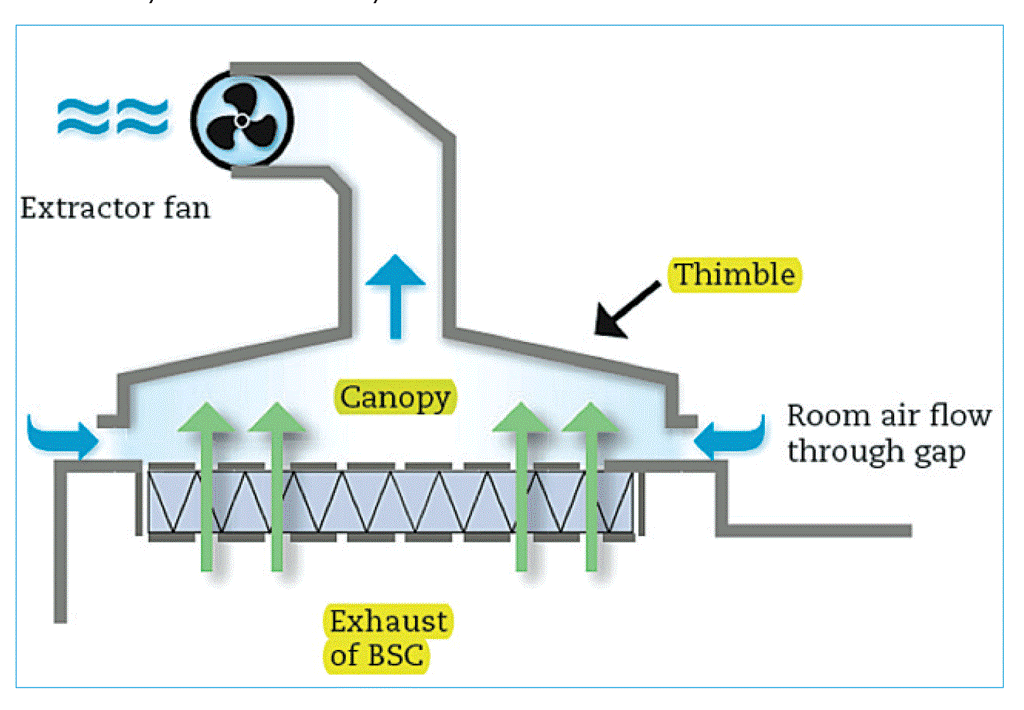كتاب روابط اجتياز لـ 1266
A thimble connection (see Figure 3) is used with Class II type A2 BSC that is ducted to the outside. The thimble fits over the cabinet’s exhaust housing, sucking the air expelled from the cabinet into ducts that lead outside. A small opening (usually 5 cm wide) is maintained between the thimble and the cabinet’s exhaust housing. This opening enables room air to be drawn into the exhaust ducting system. The capacity of the exhaust system must be sufficient to capture both room air and the cabinet’s exhaust. The thimble must be removable or be designed to allow for operational testing of the cabinet. Generally, the performance of a thimble-connected BSC is not affected much by fluctuations in the building’s airflow.
One advantage to using a thimble connection is that the BSC does not need any adjustments and the pressure in the room will remain nearly constant. To keep a controlled, constant, lowered pressure within the containment room, a damper control for the exhaust system is usually needed to enable the air flow through the thimble to be balanced with the exhaust capacity of the extractor fan placed at the end of the ducting.
Another advantage of using a thimble connection is that in case of power outages, the air flowing back into the room where there is lowered pressure will pass nearly exclusively through the thimble air intake, and not wash off bacteria from the HEPA filter. Installing a valve to prevent backflow in the duct ensures that air flowing in will travel through the clean-air intake.
Figure 3. Schematic diagram of a thimble connection for a Class II type A2 biological safety cabinets ducted directly outside the laboratory.


 تعليق
تعليق